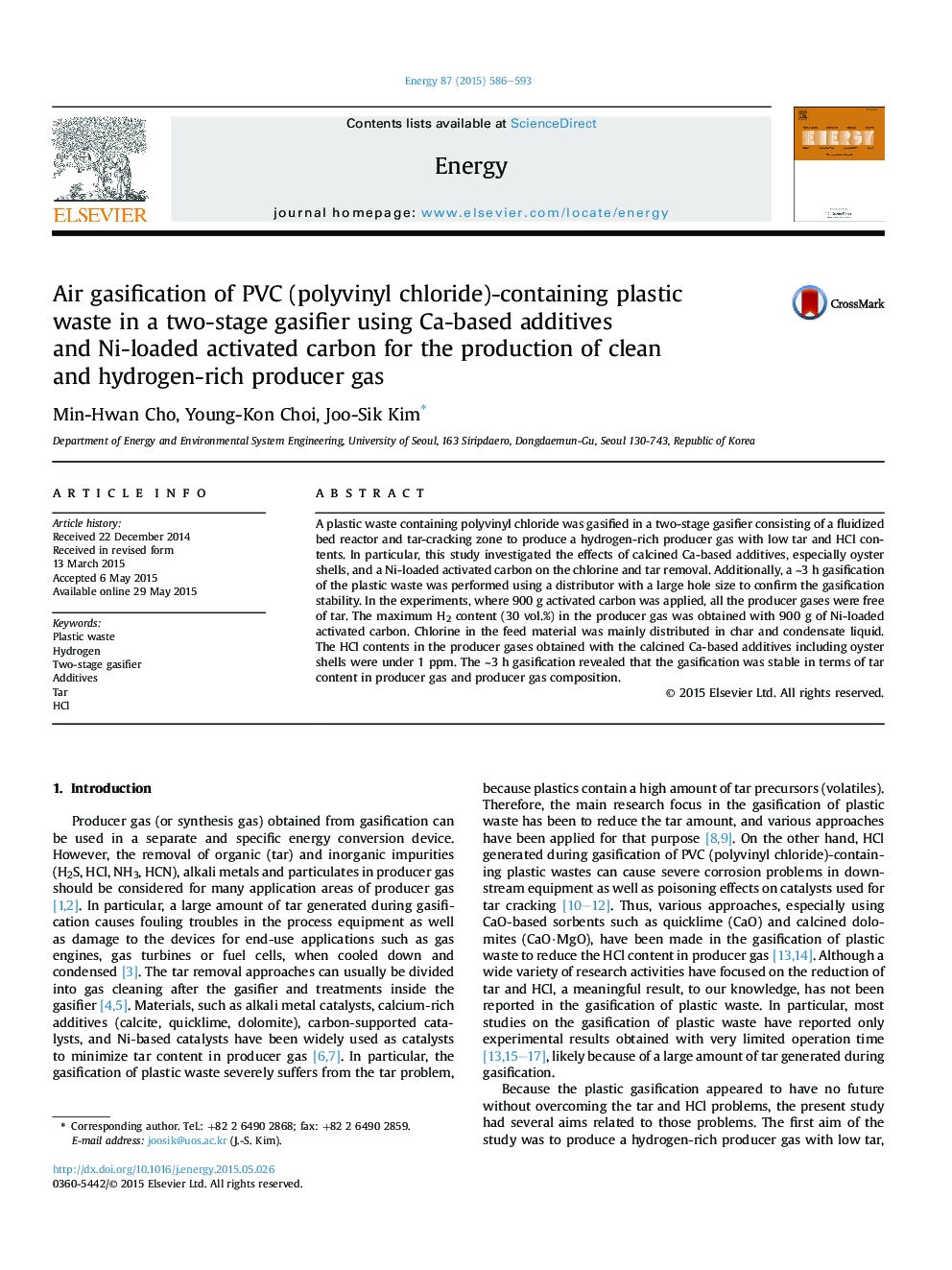| Article ID | Journal | Published Year | Pages | File Type |
|---|---|---|---|---|
| 1731864 | Energy | 2015 | 8 Pages |
Abstract
A plastic waste containing polyvinyl chloride was gasified in a two-stage gasifier consisting of a fluidized bed reactor and tar-cracking zone to produce a hydrogen-rich producer gas with low tar and HCl contents. In particular, this study investigated the effects of calcined Ca-based additives, especially oyster shells, and a Ni-loaded activated carbon on the chlorine and tar removal. Additionally, a â¼3Â h gasification of the plastic waste was performed using a distributor with a large hole size to confirm the gasification stability. In the experiments, where 900Â g activated carbon was applied, all the producer gases were free of tar. The maximum H2 content (30Â vol.%) in the producer gas was obtained with 900Â g of Ni-loaded activated carbon. Chlorine in the feed material was mainly distributed in char and condensate liquid. The HCl contents in the producer gases obtained with the calcined Ca-based additives including oyster shells were under 1Â ppm. The â¼3Â h gasification revealed that the gasification was stable in terms of tar content in producer gas and producer gas composition.
Related Topics
Physical Sciences and Engineering
Energy
Energy (General)
Authors
Min-Hwan Cho, Young-Kon Choi, Joo-Sik Kim,
